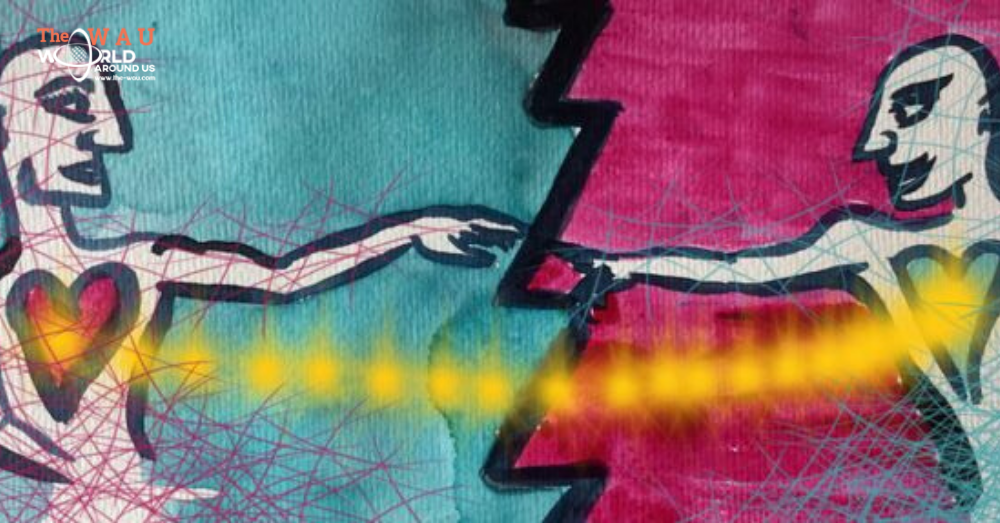With measures to tackle coronavirus leaving so many people unable to meet family and friends, how can we make more meaningful connections when we're on phone calls or using video apps? Experts offer their hacks.
Connect with your ears
At a time when we miss seeing friends, we can be seduced into having lots of video calls. But research suggests we might be better at detecting someone else's emotions without visual clues.
Our hacks:
- The power of silence: This is hard on a call, as people think silence may be a sign the line has dropped. But sharing silence can enable us to feel close. Also, the fact we are listening supportively may enable the speaker to have far richer creative thoughts while they are silent.
- Equal airtime: In a chat with a friend or parent, we need to make sure the time is shared equally between both parties. There's no value in calling your mum and talking at her for 30 minutes.
- Listen deeply: Using deep listening techniques can enable people to feel truly understood. This involves giving all our attention to the speaker, listening with curiosity and without judgement to their words, emotions, and their underlying meaning, then summarising their views to make sure you've understood.
With expertise from psychology professor Christian van Nieuwerburgh, of the University of East London, and US-based neuroscientist David Eagleman.
Connect with your eyes
"Research shows that when we increase eye contact, others pay more attention to us," says Prof Jeremy Bailenson, founding director of Stanford University's Virtual Human Interaction Lab.
But video calls present a challenge because on many devices the camera is positioned at the edge of the screen.
"We have to choose between looking someone in the eye and reading nonverbal signals, like a curious face," says Prof Bailenson.
"For 30 years, videoconferencing companies have tried all sorts of devices to try and solve the eye-contact problem but no-one has nailed it."
He also points to the "latency problem" - the time lag between an action and seeing it on screen, between your voice and your movements.
Typically a 10th to a quarter of a second, it also affects our ability to connect.
Bridget Waller, professor of evolutionary psychology at the University of Portsmouth, says reading expressions becomes especially challenging when we are on a group video chat, as we miss out on "gaze cues".
"Of all primates, humans have the largest proportion of whites in our eyes, called sclera, associated with being able to detect who others are looking at," she says.
"This skill is crucial to our species but can't be used on a group video call with everyone looking at their screens."
Our hacks:
- Raise your laptop: This means if your camera is connected to your machine, it will film you at eye level.
- Draw a face on a sticker: Put this next to the camera to entice you to look at it.
- Hide your self-view: This gets in the way of connecting with another person because we get distracted by our own face.
- Change your virtual background: Try using a shared one so, for example, everyone on the call is surrounded by palm trees. Elements that are visually connected feel as though they are more related.
With expertise from Prof Jeremy Bailenson.
Connecting without touch
Carey Jewitt, professor of technology and communication at University College London, believes the lack of touch in online conversations presents the biggest challenge.
"Touch is our first sense, we feel it in the womb and it's key to giving and receiving information and to help us bond," she says.
Research suggests emotion and touch are strongly related.
Though the UK as a whole is one of the most touch-averse societies, people still touch when they greet.
In a pub, for example, there is a warmth and comfort of being near people.
Though we may not touch, we are so close that we feel touched.
Prof Jewitt's team is researching ways for people to virtually touch, by sending heat vibrations and pressure to another person through a wearable device.
In trials of jackets that inflate and give you a sense of being held when your partner sends a message, one participant said: "Even though it is a machine squeezing me, I think of you as hugging me."
Our hacks:
- Feel the connection: Anti-coronavirus measures confront us all with isolation and we all face individual challenges. Yet this is the first crisis in living memory in which we are all experiencing something together. We have the space to practise true empathy.
- Build a new set of gestures: For example, try touching your heart and feeling the energy there to convey strong emotions beyond words and help connect through the screen.
- Show vulnerability: To build intimacy, be really honest about something personal early in the conversation.
- Create a place of safety: Especially at a time of uncertainty, communicate parameters: "This call is 30 minutes long, it's a chance to talk about how you are feeling and I am really interested in hearing what you have to say."
With expertise from Prof Christian van Nieuwerburgh.
Share This Post















